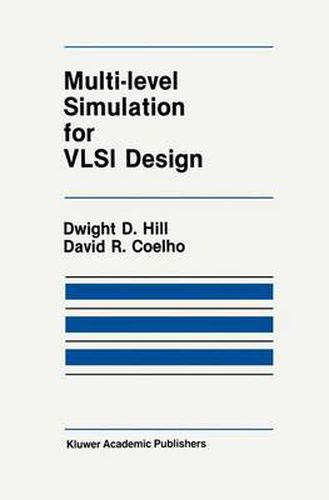Readings Newsletter
Become a Readings Member to make your shopping experience even easier.
Sign in or sign up for free!
You’re not far away from qualifying for FREE standard shipping within Australia
You’ve qualified for FREE standard shipping within Australia
The cart is loading…






This title is printed to order. This book may have been self-published. If so, we cannot guarantee the quality of the content. In the main most books will have gone through the editing process however some may not. We therefore suggest that you be aware of this before ordering this book. If in doubt check either the author or publisher’s details as we are unable to accept any returns unless they are faulty. Please contact us if you have any questions.
AND BACKGROUND 1. 1 CAD, Specification and Simulation Computer Aided Design (CAD) is today a widely used expression referring to the study of ways in which computers can be used to expedite the design process. This can include the design of physical systems, architectural environments, manufacturing processes, and many other areas. This book concentrates on one area of CAD: the design of computer systems. Within this area, it focusses on just two aspects of computer design, the specification and the simulation of digital systems. VLSI design requires support in many other CAD areas, induding automatic layout. IC fabrication analysis, test generation, and others. The problem of specification is unique, however, in that it i!> often the first one encountered in large chip designs, and one that is unlikely ever to be completely automated. This is true because until a design’s objectives are specified in a machine-readable form, there is no way for other CAD tools to verify that the target system meets them. And unless the specifications can be simulated, it is unlikely that designers will have confidence in them, since specifications are potentially erroneous themselves. (In this context the term target system refers to the hardware and/or software that will ultimately be fabricated. ) On the other hand, since the functionality of a VLSI chip is ultimately determined by its layout geometry, one might question the need for CAD tools that work with areas other than layout.
$9.00 standard shipping within Australia
FREE standard shipping within Australia for orders over $100.00
Express & International shipping calculated at checkout
Stock availability can be subject to change without notice. We recommend calling the shop or contacting our online team to check availability of low stock items. Please see our Shopping Online page for more details.
This title is printed to order. This book may have been self-published. If so, we cannot guarantee the quality of the content. In the main most books will have gone through the editing process however some may not. We therefore suggest that you be aware of this before ordering this book. If in doubt check either the author or publisher’s details as we are unable to accept any returns unless they are faulty. Please contact us if you have any questions.
AND BACKGROUND 1. 1 CAD, Specification and Simulation Computer Aided Design (CAD) is today a widely used expression referring to the study of ways in which computers can be used to expedite the design process. This can include the design of physical systems, architectural environments, manufacturing processes, and many other areas. This book concentrates on one area of CAD: the design of computer systems. Within this area, it focusses on just two aspects of computer design, the specification and the simulation of digital systems. VLSI design requires support in many other CAD areas, induding automatic layout. IC fabrication analysis, test generation, and others. The problem of specification is unique, however, in that it i!> often the first one encountered in large chip designs, and one that is unlikely ever to be completely automated. This is true because until a design’s objectives are specified in a machine-readable form, there is no way for other CAD tools to verify that the target system meets them. And unless the specifications can be simulated, it is unlikely that designers will have confidence in them, since specifications are potentially erroneous themselves. (In this context the term target system refers to the hardware and/or software that will ultimately be fabricated. ) On the other hand, since the functionality of a VLSI chip is ultimately determined by its layout geometry, one might question the need for CAD tools that work with areas other than layout.